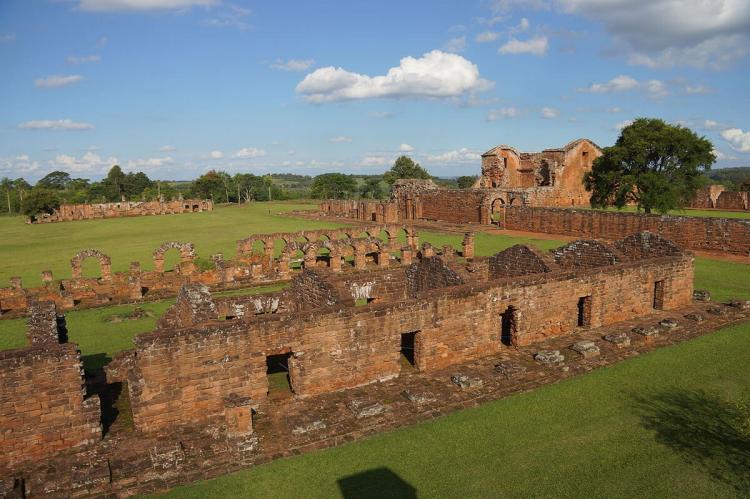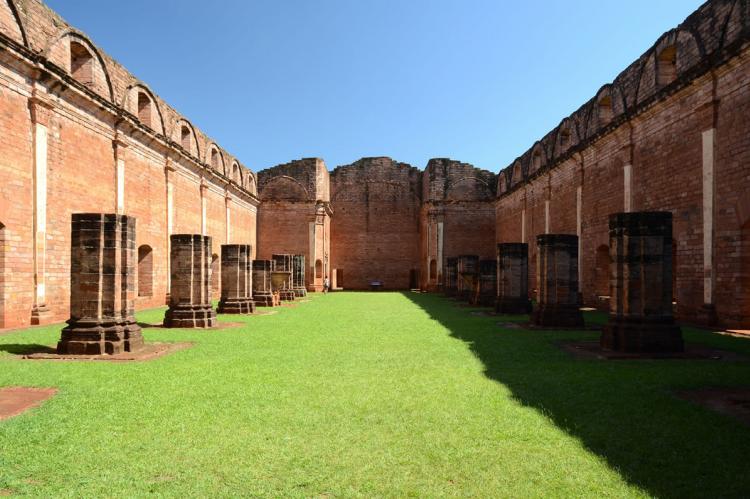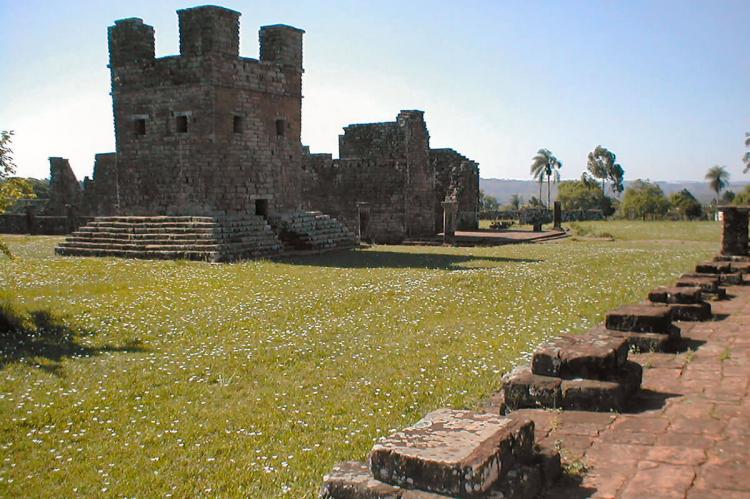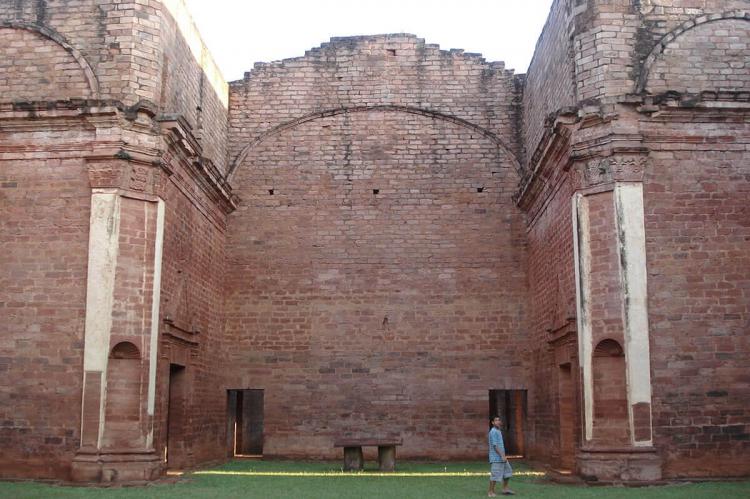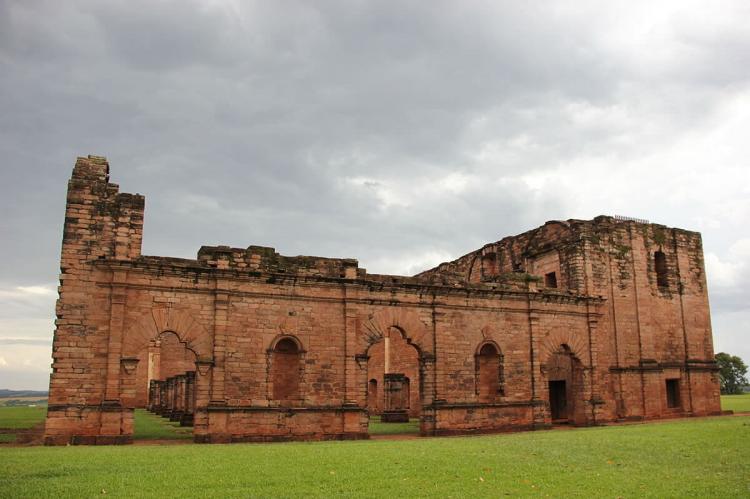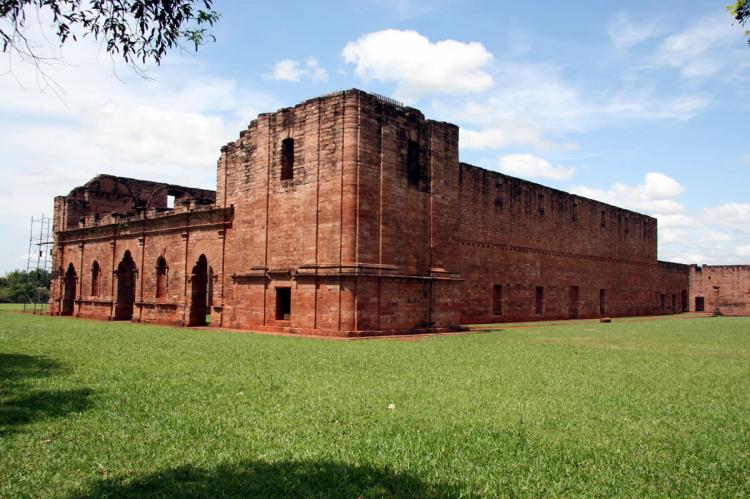Jesuit Missions of Paraguay: La Santísima Trinidad de Paraná and Jesús de Tavarangue
The Jesuit Missions of Paraguay hold a significant place in South America's cultural and religious history. La Santísima Trinidad de Paraná and Jesús de Tavarangue are part of a series of 30 missions in the Río de la Plata basin established by the Society of Jesus during the 17th and 18th centuries.
Jesuit Missions of Paraguay
The Jesuit Missions in Paraguay, established during the 17th and 18th centuries, hold a significant place in South America's cultural and religious history. It is rooted in the broader Jesuit missionary efforts; these missions aimed to spread Christianity among indigenous populations and create self-sufficient communities that harmoniously blended European and indigenous elements.
Like their counterparts in neighboring countries, the Jesuits in Paraguay embraced a policy of cultural accommodation. This approach led to the development of the unique Guarani Baroque style, where European artistic forms seamlessly integrated with indigenous motifs. The Jesuit Missions of Paraguay, as a whole, embody this synthesis, showcasing a visual language that speaks to the shared creativity of Jesuits and Guarani artisans.
Beyond their religious functions, the missions were centers of education and economic activities. The Jesuits introduced European arts and sciences, fostering a vibrant intellectual atmosphere. Additionally, agricultural endeavors were undertaken, introducing European crops and techniques that contributed to the economic sustainability of these communities.
Jesuit Missions of La Santísima Trinidad de Paraná and Jesús de Tavarangue
In 1993, the Jesuit Missions of La Santísima Trinidad de Paraná and Jesús de Tavarangue were collectively designated as a UNESCO World Heritage Site. This international recognition underscores their universal cultural value and contribution to the collective heritage of humanity.
Nestled in the heart of Paraguay, the Jesuit Missions of La Santísima Trinidad de Paraná and Jesús de Tavarangue stand as captivating testaments to a unique chapter in history. These missions showcase the profound cultural and architectural impact of the Jesuit presence in South America during the 17th and 18th centuries.
The missions of La Santísima Trinidad de Paraná and Jesús de Tavarangue are located in the Itapúa Department of Paraguay. The architectural splendor of these missions reflects a unique fusion of European Baroque influences and indigenous craftsmanship. The churches and surrounding structures, adorned with intricate details, showcase the dedication and skill of both Jesuit missionaries and the indigenous Guarani people.
La Santísima Trinidad de Paraná:
-
Located near the Paraná River, La Santísima Trinidad de Paraná was founded in 1706.
-
The mission complex includes a remarkable church, residences, workshops, and communal areas.
-
The church, with its ornate facade and Baroque detailing, serves as a testament to the architectural ingenuity of the Jesuits and the cultural exchange with the Guarani.
Jesús de Tavarangue:
-
Jesús de Tavarangue, founded in 1685, lies along the Paraná River as well.
-
The mission boasts a grand church that, despite being unfinished, stands as a magnificent example of Jesuit Baroque architecture.
-
The intricate carvings and architectural details evoke a sense of awe, providing a glimpse into the grand vision of the Jesuits for this spiritual haven.
Like their counterparts in Argentina and Brazil, the Jesuits in Paraguay embraced a policy of cultural accommodation rather than assimilation. This approach led to a unique Guarani Baroque style, where European artistic forms integrated seamlessly with indigenous motifs. The churches of La Santísima Trinidad de Paraná and Jesús de Tavarangue embody this synthesis, creating a visual language that speaks to the shared creativity of Jesuits and Guarani artisans.
Beyond their religious functions, the missions were centers of education and economic activities. The Jesuits imparted European arts and sciences, fostering a vibrant intellectual atmosphere. Additionally, the missions undertook agricultural endeavors, introducing European crops and techniques that contributed to the economic sustainability of these communities.
Preservation efforts have been underway to safeguard these architectural gems and cultural treasures. Restoration projects aim to maintain the missions' structural integrity and promote a deeper understanding of the historical, cultural, and religious significance embedded in their walls.
